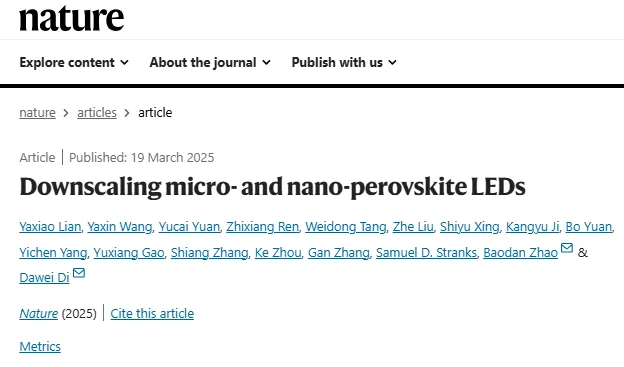Many breakthroughs in electronics and photonics have been made possible by miniaturization, the process of reducing the size of basic devices. The reduction in the size of light-emitting diodes (leds) based on III-V group semiconductors gave birth to micro-leds, which are the "ultimate technology" for display technology.
However, micro-leds are expensive to manufacture and their efficiency degrades severely when the pixel size shrinks to about 10 μm or less, limiting their potential for commercial applications.
In order to solve this problem, Professor Di Dawei, Professor Zhao Baodan and others from Zhejiang University published a new paper entitled "Downscaling micro- and nano-perovskite LEDs" in the journal Nature. In this study, an emerging LED technology, the miniaturization of perovskite semiconductor based LED (PeLED), is demonstrated, allowing its size to break through traditional limits. Through the local contact preparation scheme, the researchers successfully prepared micro- and nano-scale perovskite leds (micro-PELED /nano-PeLED), whose characteristic pixel size was reduced from hundreds of microns to about 90 nm, while effectively avoiding non-radiative loss at the pixel boundary.
For both the near infrared (NIR) and green micro-PeLED prepared in this paper, the external quantum efficiency (EQE) remains at about 20% over a wide pixel size range of 650 to 3.5 μm, indicating minimal performance degradation during size reduction. When the feature pixel size is reduced to about 90 nm, the researchers successfully achieved the smallest LED reported so far, with a pixel density of up to 127,000 PPI, setting a record for all LED arrays. The researchers' research demonstrates the great potential of micro- and nano-PeLED as a new generation of compact and scalable light source technologies.






